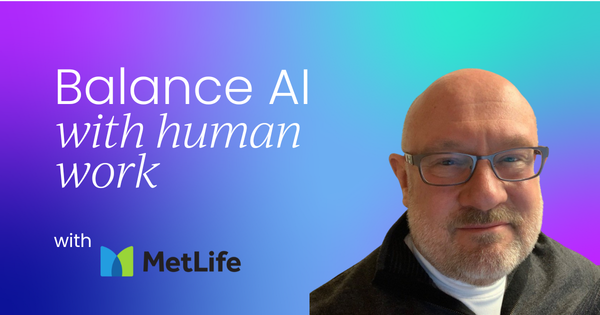I’ve had a really funky career so far. That’s honestly the best way I can describe it.
I’ve led financial planning and analysis (FP&A) groups at a number of companies: Raytheon, United Technologies when it was still separate, and now MetLife. But I’ve also found myself in roles that, on paper, seem completely out of place for a finance guy.
I once ran a shop floor at Northwest Airlines. I redesigned the executive incentive system and metrics at Raytheon. I’ve worked in operations, in HR-related functions, and in strategy roles.
At first glance, those experiences don’t seem connected. But looking back, they all gave me a chance to see how different parts of a company operate, and more importantly, how they connect.
It’s given me a perspective that I think more FP&A professionals should cultivate. Because when we only live in our own FP&A bubble, when we only talk to finance people, our perspective narrows.
But when we open ourselves up to what others in the organization are thinking (operations, HR, sales, engineering) it changes how we approach our work entirely.
That’s what I want to talk about: how our profession is evolving, what we stand to gain from technology like AI, and what we could lose if we’re not careful.
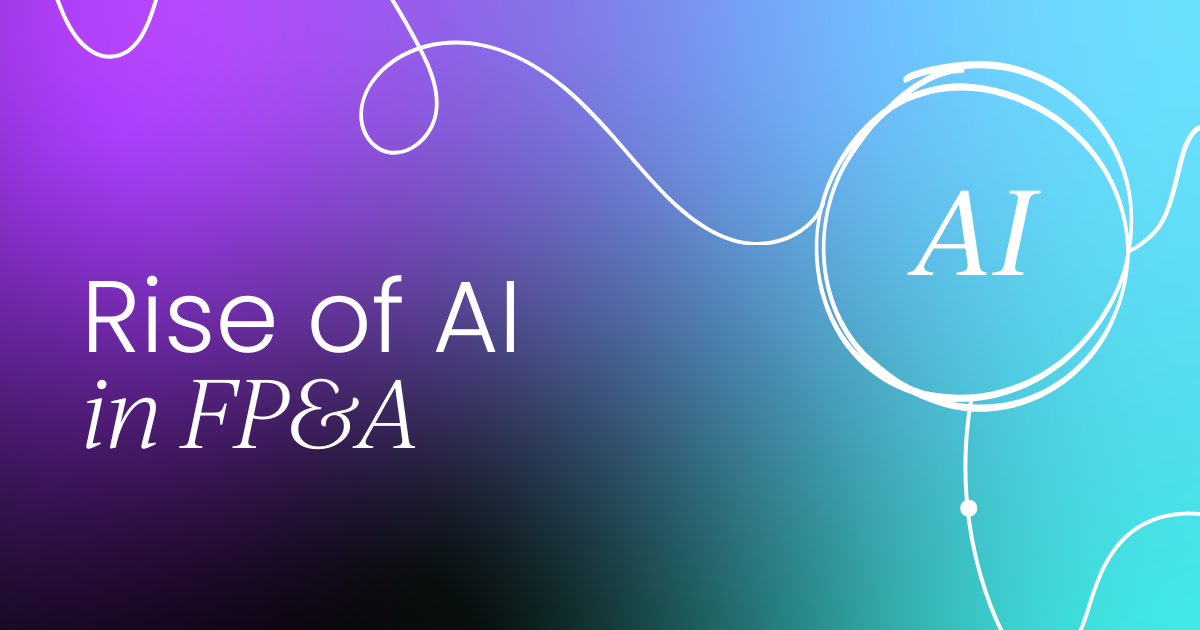
Why financial planning matters more than ever
Whenever I speak to groups about financial planning, I like to ask a simple question: Why are we important? It’s not a trick question, but the answers are always telling.
People will say, “Because we’re future-focused” or “We help the company make better decisions”, which is all true. Others might add, “We’re the liaison between departments and finance.” Again, absolutely true. FP&A connects the dots between departments that might not otherwise talk to each other.
But after all these years, I’ve come to see FP&A as much more than a data function. Yes, we have data responsibilities (GAAP compliance, MD&A writing, performance measurement, providing data for decisions).
We help our business partners stay out of regulatory trouble by saying, “No, you can’t do that, do this instead.” We’re the keepers of the historical record. When someone asks, “How did we handle this four years ago?”, we have the answer.
But beyond all that, FP&A is fundamentally a relationship function.
Think about it: what is a budget, really? It’s not just numbers. It’s an agreement, a shared set of expectations between a division head and a CFO. It says, “I will perform at this level this year, and you will reward me for it.”
That’s not accounting; that’s relationship management. It’s negotiation, alignment, and trust.
In that sense, FP&A reports the past but also facilitates a shared vision of the future.
The human core of our work
In every organization I’ve been part of, FP&A has been the connective tissue. We’re the people who talk to everyone: the engineers building the product, the HR teams developing talent, the operations folks solving supply chain issues, the CFO who needs a clear picture of it all.
We’re the translators between strategy and measurement, between the vision of where the company wants to go and the metrics that tell us whether we’re on track.
When I was a senior financial analyst, my division head once said, “You’re not sitting in that finance office, you’re sitting right next to me.”
She wanted me within arm’s reach, because she wanted to bounce ideas off me in real time. She knew that my role wasn’t just to report numbers, but to also interpret, advise, and translate.
That’s why I often tell my teams: FP&A is a relationship business disguised as a data business.
The coming disruption of AI
Now, let’s talk about AI.
There’s no denying the promise it brings: efficiency, cost savings, speed. I’ve seen senior leaders (very smart, capable people) light up at the thought of automating huge chunks of the FP&A process. I’ve even seen one former boss practically drool at the idea of wiping out an entire department with a click.
And sure, AI can save us time. It can handle repetitive data tasks and process mountains of information faster than we ever could. But here’s the question that keeps me up at night:
What are we going to lose when we gain those cost savings?
There’s a quote from the National Institute of Health that I often share:
“Human closeness will gradually diminish as AI replaces the need for people to meet face to face for idea exchange. AI will stand between people as personal gatherings will no longer be needed for communication.”
That one stopped me cold. Because if you think about what we do in FP&A (crossing organizational boundaries, connecting departments, building trust) those human interactions are everything.
If we start letting AI sit between us, what happens to those relationships?
Three things we can’t afford to lose
When we rush to implement AI in finance, there are three things we risk losing if we’re not thoughtful.
1. Enterprise alignment
One of the biggest frustrations CEOs express is misalignment: people across the company pulling in different directions, not fully understanding where the organization is headed or how their work contributes to that strategy.
FP&A has always played a central role in fixing that. We take the corporate strategy and translate it into measurable objectives. We track progress. We communicate across silos.
AI can crunch numbers, but it can’t align people. It can’t sense when a department is moving in the wrong direction or when a conversation is needed to bring two teams back on track. Alignment is human work.
2. Business network connectivity
Because FP&A crosses so many boundaries, we often connect areas that don’t naturally talk to each other. We’re the glue. We hear something from operations that might solve a problem in marketing. We surface insights that product and HR both need to hear.
AI doesn’t have lunch with colleagues. It doesn’t overhear an offhand comment that sparks a new idea. It doesn’t broker trust between leaders. Those informal connections are where some of the most valuable work gets done.
3. Career development and succession planning
This is the one that really worries me. Just under half of Fortune 100 CEOs were at least division CFOs at some point.
Many of them started in roles that, on the surface, looked like “data cruncher” jobs in FP&A. But those jobs were training grounds: they taught them how the business really works, who the key players are, how to think strategically, and how to communicate across departments.
If we automate away those roles entirely, where will the next generation of financial leaders come from? Where will they learn to see the organization as an interconnected system rather than a collection of reports?
We can’t afford to lose that pipeline.
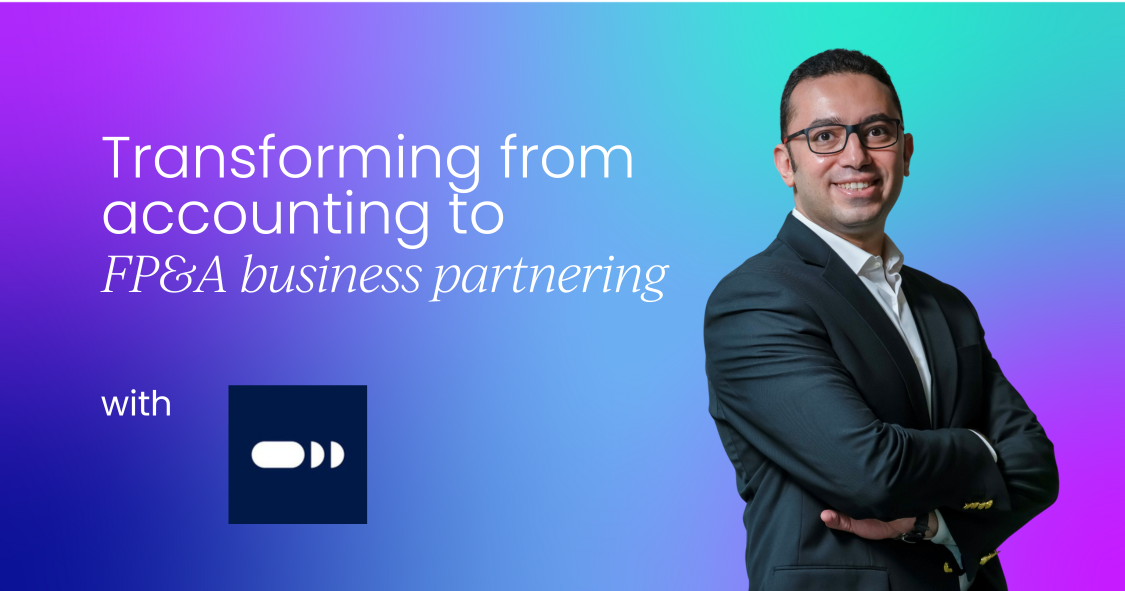
Lessons I learned about the power of connection
One of the most formative experiences of my career came when I worked at Raytheon. There, I led the company’s flagship executive development program, which we ran in partnership with Dr. Ron Burt from the University of Chicago.
Ron taught a concept called social capital: the value people derive not from their individual skills, but from being connected within an organization.
In other words, ; social capital is what you gain from who you know and how you connect those people.
We all understand formal relationships, such as the org chart and who reports to whom. But here’s the thing: formal relationships mostly define who’s to blame when something goes wrong. Informal relationships (the ones you build through trust and conversation) are where work actually gets done.
Ron’s research quantified that idea. He studied networks across multiple organizations, asking people: “Who are the most important people for you to get your job done?” Then he analyzed those networks mathematically. What he found was eye-opening.
People whose networks were open and brokered (meaning they connected across groups that didn’t usually interact) were significantly more successful. They were promoted faster, rewarded more often, and recognized as higher performers.
In fact, across six companies, people with brokered networks earned promotions and raises at rates 1.5 standard deviations higher than those in closed, insular networks.
Why? Because they were exposed to more ideas. They had access to more perspectives. They were the ones connecting dots others couldn’t see.
That research stuck with me, and I’ve seen it play out time and again.
Raytheon in the early 2000s was, to put it mildly, an interesting place. The company had just merged multiple organizations (pieces of Hewlett Packard, Texas Instruments, and others that had been fierce competitors for decades).
They didn’t just ignore each other, they hated each other. And now they were expected to work together.
The result was predictable. Each division could deliver an incredible component, what we called a “black box.” But customers didn’t want five black boxes, they wanted solutions. They’d say, “We’re paying you to solve our problem, not to sell us parts.”
So our team would go into these divisions, survey employees about who they worked with, and map out their internal networks. We could literally see where the connections existed and where they didn’t. Then we’d visualize those networks. The dots were people; the lines were their relationships.
When we removed the “super-connectors” (those brokers who bridged gaps) the entire network would often collapse. That’s how fragile collaboration was. But when we brought people from different clusters together to see the map, something amazing happened.
They realized their so-called “impossible problems” already had solutions sitting in another division, waiting to be discovered.
Those sessions would end with teams saying, “We know exactly what to do now.” The solution was there all along, they just weren’t talking to each other.
That experience taught me that connectivity isn’t just a nice-to-have, it’s the foundation of organizational success. And FP&A sits right in the middle of that web.
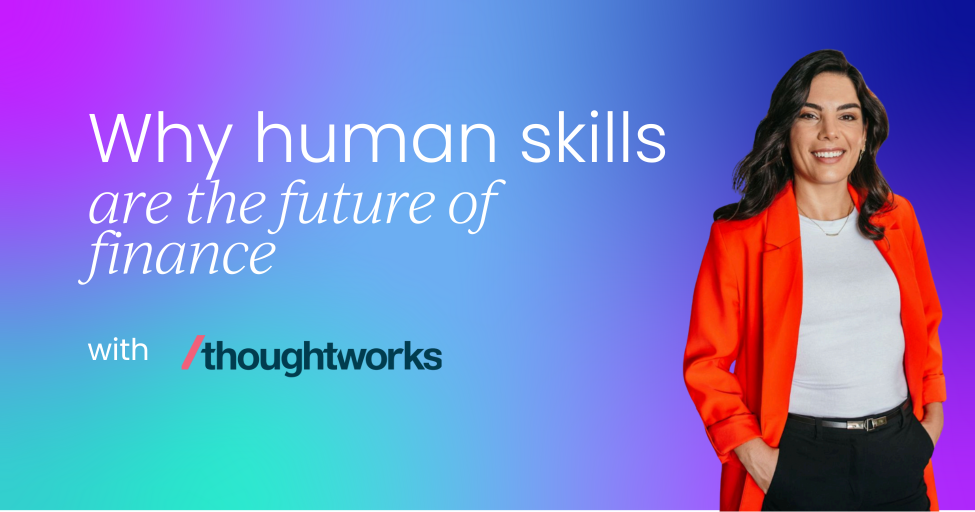
What the data says about networks and rewards
The other fascinating insight from Ron Burt’s work was how measurable this effect is.
He created a concept called constraint, which measures how open or closed your network is. It runs on a scale from 0 to 100. A low score means your contacts don’t all know each other and you bridge across groups. A high score means your network is tight; everyone you know knows everyone else.
When he correlated people’s constraint scores with their compensation data, he found that those with more open, brokered networks (lower constraint) were consistently rewarded more. They got promoted earlier, earned higher raises, and achieved faster career growth.
Even after stripping out variables like education, gender, geography, and tenure, the pattern held true.
In other words: the people who crossed boundaries and built connections were the ones who advanced.
That’s something AI can’t replicate. It can’t build informal trust networks or broker relationships across silos. Those skills will only become more valuable as automation spreads.
The path forward: Being smart about AI
Let me be clear, I’m not anti-AI. Far from it. I love what it promises to do for our profession. It can eliminate repetitive manual work, accelerate forecasting, and free us to focus on higher-value analysis.
But we have to be smart about implementation. Before we automate away those “junior” roles, we need to ask ourselves some hard questions.
- Who will build the relationships that create organizational alignment?
- Who will serve as the intelligence network for the CFO?
- Who will develop into the next generation of financial leaders?
Those aren’t rhetorical. They’re the backbone of what makes FP&A such a critical function.
When I think back to that early division head who wanted me sitting next to her, it wasn’t because she needed a spreadsheet expert. She needed a partner. Someone who could help her understand what the CFO meant, who could translate financial direction into operational action.
That’s what we do best.
If there’s one message I’d leave my peers with, it’s this: formal relationships in an organization are about accountability. Informal relationships are where progress happens.
AI can help with the former: it can track metrics, flag anomalies, and produce reports.
But it can’t build the informal trust that keeps a business humming. It can’t walk into a manufacturing plant, chat with the manager, and realize the production issue they’re facing ties directly to a sales forecast assumption. It can’t connect those dots through human conversation.
We can.
So yes, let’s embrace AI. Let’s use it to automate what it does best. But let’s also remember that the heart of FP&A isn’t automation, it’s connection.
A fundamentally human profession
After all these years, and all those “funky” career turns, I’ve come to believe that financial planning is one of the most human professions in business.
We don’t just analyze data. We build relationships that enable strategy. We connect dots across silos. We help the business understand itself.
And as AI reshapes our field, our challenge will be to hold onto those uniquely human strengths.
Because the most valuable thing any FP&A professional brings to the table isn’t their spreadsheet skills or their forecasting model. It’s their ability to connect people, to build trust, and to align the organization around a shared future.
That’s something no algorithm can do. And it’s why, no matter how much technology evolves, FP&A will always be, at its core, a deeply human profession.
This article is based on Jay Dyer's brilliant talk at our FP&A Summit in Boston.
Take our Salary Survey to help highlight what’s really happening in finance, including how much finance professionals are making.
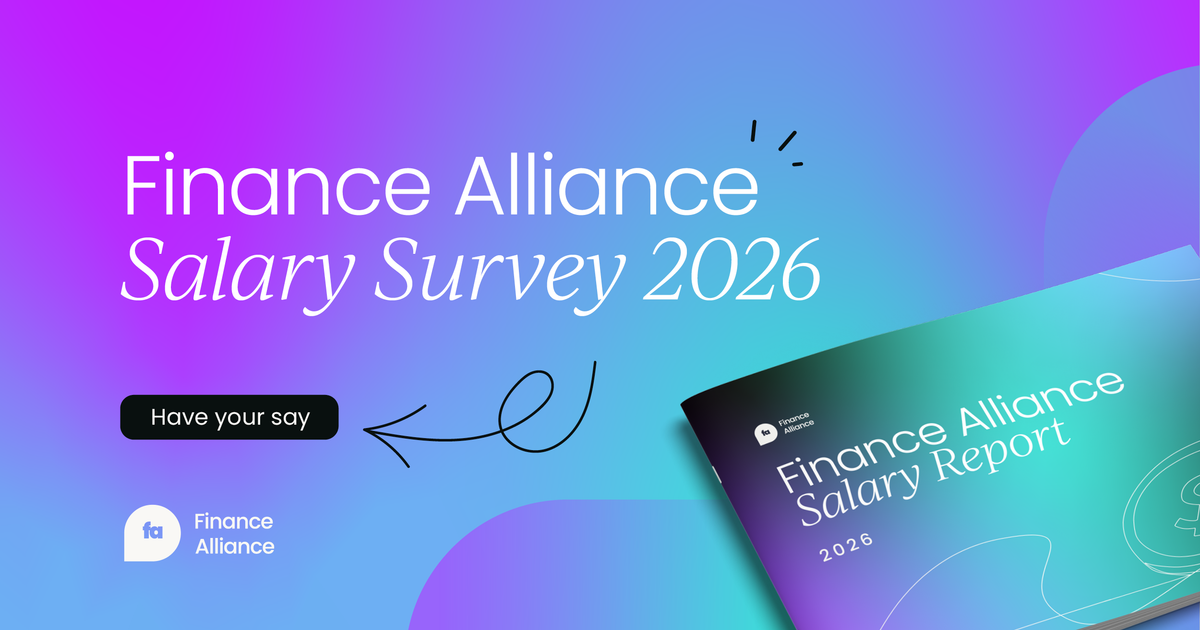

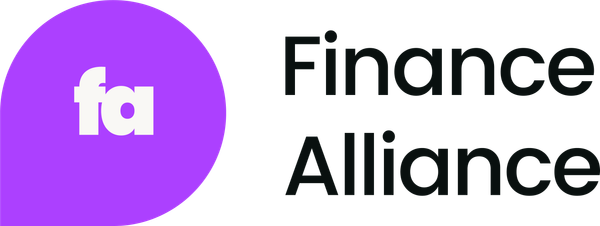

 Follow us on LinkedIn
Follow us on LinkedIn





